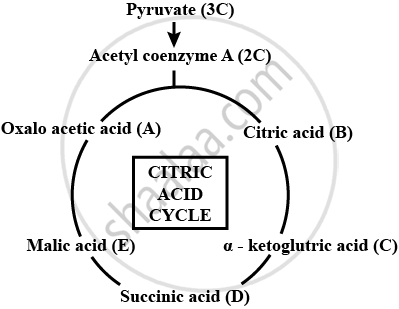Advertisements
Advertisements
Question
How are aerobic and anaerobic respiration different in plants?
Solution
|
Aerobic respiration in plants |
Anaerobic respiration in plants |
|
1. Also called oxybiotic respiration |
1. Also called anoxybiotic respiration |
|
2. Proceeds in the presence of oxygen |
2. Proceeds in the absence of oxygen |
|
3. Occurs in mitochondria |
3. Occurs in cytoplasm |
|
4. Complete breakdown of glucose |
4. Incomplete breakdown of glucose |
|
5. End-products are carbon dioxide and water |
5. End-products are ethyl alcohol and carbon dioxide |
|
6. A large quantity of energy is liberated (38ATP) from one mole of glucose |
6. A small quantity of energy is liberated (2ATP) from one mole of glucose |
|
7. Occurs normally throughout the life |
7. Occurs temporarily for short periods |
APPEARS IN
RELATED QUESTIONS
Distinguish between the following:
Aerobic respiration and Anaerobic respiration
Answer the following in one word.
Which membrane covers the lungs?
State if the following statement is true or false. Correct the statement if it is false.
The microscopic air sacs present in the lungs are called bronchi.
Answer the following in short.
What is the function of pleural fluid?
Mention if the following statement is true or false. If false, rewrite them correctly.
Carbon dioxide readily dissolves in limewater.
Which process is common to aerobic and anaerobic respiration?
The question has four options. Choose the correct answer:
Alcohol is produced during the process of
The question has four options. Choose the correct answer:
Where does glycolysis take place?
How many NADH2 molecules produced in two turns of Krebs cycle?
Identify the CORRECT combination of number of carbons present in the substrate molecules (B, C, D, A) involved in TCA cycle.

______ is the final electron acceptor during aerobic respiration.
Which of the following enzyme converts DHAP into 3-PGAL?
Fumaric acid is converted into malic acid by a process called ____________.
Identify the number of 3 carbon compounds formed during glycolysis.
Acetyl Co-A (2C) combines with water and Oxaloacetic acid (4C) to form ____________.
At how many steps decarboxylation takes place in single Krebs cycle?
From the following which organic acid is formed last in Krebs cycle?
What are the adaptations of leaves for photosynthesis?
Mention the important series of events of aerobic respiration that occur in the matrix of the mitochondrion and in the inner membrane of the mitochondrion.
During oxidative phosphorylation the net gain of ATP is ______.
